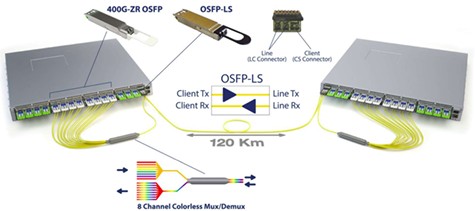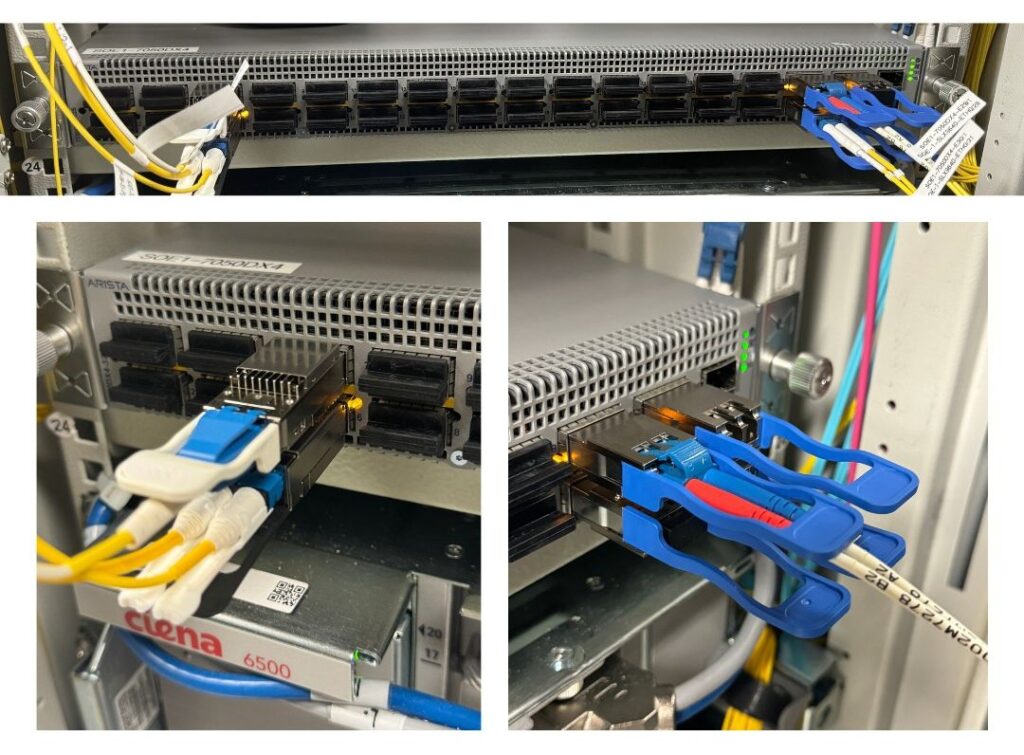SingAREN’s 400G journey has begun …..
28 Feb 2025 – Research in the academic sectors and institutions has grown tremendously and is more data-hungry than ever, driven by the adoption of AI/ML, Cloud computing, and 5G demands. Different research groups have diverse requirements in terms of bandwidth and services. NRENs need to be agile in order to meet and serve the diverse requests from researchers in a secure manner. Over the span of ten years, SingAREN grew from 1 GE to 100 GE by 2014. Since 2023, we have begun planning to achieve 400 GE bandwidth by 2026.
Under Simon Green’s leadership, the technical team used this 400G upgrade opportunity to address the predictable space, power, complexity, and scalability requirements to meet future NREN needs. The ultimate objective is to maintain a cost-effective and scalable solution while reducing power consumption, improving operational efficiency, and simplifying network architecture.
The first phase of the 400G deployment plan was to source and commission a suitable 400G network switch by Q1 2025. The complete 400G SingAREN backbone, with each component in the network loop capable of processing data at 400Gbps, is expected by Q4 2026.
Figure 1 depicts the current 100G configurations at SOE-1 and SOE-2, which include two 100G LACP connected to each 100G router. The two geographically distant POPs are linked by a pair of dark fibre lines, with an estimated loss of 20 dB @ 1550nm.

Figure 1: Ideal switch configuration between the 2 POPs
The best solution for our requirements came from Arista, which included a pair of 400G switches with 32 x 400G QSFP-DD ports, an optical amplifier, and an 8-channel MUX/DEMUX cable system to compensate for the dB loss when using 400GE ZR QSFP-56DD (400G ZR) transceivers. The actual connection is shown in Figure 2.

Figure 2: Arista 400G switch connections with ZR transceivers
The Arista 7050DX4-32S switch is a 1RU system with 32 x 400G QSFP-DD ports offering wire speed throughput of up to 12.8 Tbps. Each QSFP-DD port supports a choice of 7 speeds with flexible configuration between 400GbE, 200GbE, 100GbE, 50GbE, 40GbE, 25GbE and 10GbE modes for up to 128 ports of 10GbE and 25GbE or 144 ports of 50GbE or 64 ports of 200GbE using breakouts. All ports can operate in any supported mode without limitation, allowing easy migration from lower speeds and flexibility.
The 400G ZR transceivers provide flexibility as they are coherent by default, allowing one to tune the transceiver lasers to different wavelengths. As more 100G access links increase to multiple 400G, bandwidth across sites can be increased simply by adding 400GE ZR transceivers to the multiplexer which can multiplex up to 8 x 400G wavelength into the same dark fiber pair without any change to the existing setup. No configuration is required on the multiplexer or amplifier. The 400G ZR transceiver requires a simple configuration to tune the wavelength which will be configured on the network device.

Figure 3: CAB-LC8-CS optical coupler-splitter cable
The CAB-LC8-CS optical coupler-splitter cable, shown in Figure 3, combines optical signals of up to 8x 400ZR modules onto a single fibre pair which is then connected to an amplifier that transmits over up to 120km of fiber. Each 400ZR transceiver can be configured to the desired wavelength by tuning its coherent DWDM transmitter and receiver through the console.

Figure 4 Completed setup of 400G Switch at Global Switch @ TaiSeng
SingAREN can now allow 400G traffic from Japan and USA RENs to transit through our POPs at 400G directly after the two 400G switches were put into service on February 21, 2025. Other lower bandwidth REN routes could achieve 400 Gbps by inverse-multiplexing of 100G links.
To sum up the benefits of this new 400G switch configuration:
- Cost effectiveness – 400G not only simplifies the network configuration by providing one single 400Gbps connection, instead of 4x100G lines to achieve the same bandwidth requirement.
- Low latency: With a single 400G pipe, the higher speeds and greater efficiency lowers the per-bit latency as opposed to using 4 pairs of 100G lines.
- Better scalability: The latest 400G hardware, such as high-speed optical transceivers, allows scale up and scale out of SingAREN network architecture.
- Energy saving – The compact 1RU footprint switch allows for more real estate space saving at our data centres, and also generates less heat and power dissipation.
This initial phase of 400G deployment is essential to help us meet the rapidly increasing demands from our members and the NREN community for greater bandwidth, low latency, and scalability as SingAREN continues on its 400G journey. SingAREN would like to thank the National Research Foundation (NRF) for funding this transformation as well as the upcoming adaptation phase.


